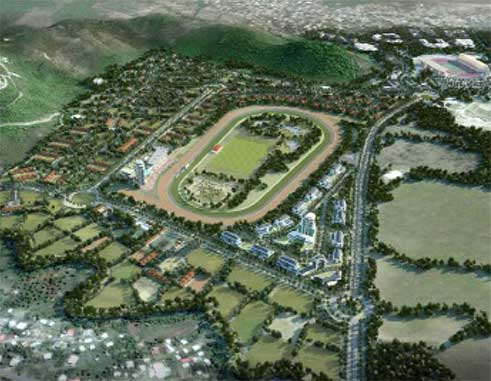
WITH the competing voices, it is important that we all read the information on the DSH Project for ourselves and get the truth. I learned many years ago that facts do not equate truth. Yet, truth is the summation of all facts. I remain of the view that there are significant issues that need to be addressed in future and final agreements on the Project and it is critical that a coherent and plausible presentation of those concerns be made and be fully discussed and the Government be willing to embrace those concerns. However, those issues which are clothed with irrelevance must be unmasked to not allow the more salient issues to be diminished.
It is the hope that this article will generate healthy discussion and bring even greater clarity to the agreement. I also expect it will generate a few opprobrious invectives, which one fully understands, and I can only hope those still drunk with the political wine will over time regain sobriety.
These are the distilled indisputable facts on the DSH – Buyback Clause.
Clause 10.2 …….The parties agree that the requirement to buyback the Land pursuant to clause 10.1 refers solely to the legal title to the Land and the price to be paid by the Government upon the buyback shall be the price paid initially by the Master Developer to the Government for the Land plus the value of the infrastructure which has been erected on the Land.
Clause 10.1
If within 24 months of the Launch, fewer than 200 investors have invested in the Project, the
Developer having diligently marketed the Project, and the Government has implemented and/or benefits, pursuant to clause 10.2, the Master Developer may give written notice to the Government to terminate this Agreement and require the Government to purchase all or any part of the Land at the price purchased (the ‘Buyback Notice’).
A reading of the above Clauses suggests that the Buyback Clause is a sunset clause and is only applicable for the period of two years. The Clause is not applicable to the project two years after the launch. Secondly, there can only be a buyback of freehold lands sold to the developer. Leased lands are not subject to the buyback clause in the two-year period of the effectiveness of the clause.
Now look at Clause 2.3 of the Framework Agreement; ‘Payment for Land shall be arrears at the completion of each Parcel Development’.
If payment for freehold land is made on completion of a phase, then the freehold land transferred in the window of two years are the only lands subjected to the buyback clause. We can summarize the lands that are subject to the Buyback Clause in the Framework Agreement:
a. The land must be on a completed phase in the first two years of the project, and
b. The land must be freehold land that was paid for by the developer
The next point is what has to be purchased if the Buyback Clause is activated. Clause 10.2 states the value of the infrastructure plus the land at the price initially paid.
Infrastructure is an engineering term — not a legal term — and refers to roads, telecommunications, electricity, water and sewerage. It does not refer to buildings. So let us put it all together: the infrastructure on all freehold lands on any phase completed in the first two years on the project will be only financial commitment of the GOSL under the Buyback Clause as the land cost remains the same.
I believe that only Phase 1 with the best of intention can be completed within the first two years, and thus the risk mitigation becomes the confirmation of the cost of the infrastructure that is being placed on freehold lands. Clause 2.10 states that the land identified for horse racing in the Phase 1 will be leased and thus this component is not subjected to the Buyback Clause. The final agreement must thus include a clear mechanism for the determination of the infrastructure cost on the freehold lands and a definition of infrastructure as outlined above.
I remain of the view that the Buyback Clause is not a significant issue and should not be a central focus. The Escrow Account was set up primarily to protect purchasers of real estate under the CIP, whether it is in Saint Lucia or in the UK is irrelevant. The predominant issue is the mechanism for withdrawal, again an irrelevant detail pursued.
In my view, the principal concern must be the safeguards to ensure that we do not have a failed project and the freezing of large tracts of land to add to the long list of failed tourism projects in Saint Lucia. On the Environmental and Planning issues, I remain confident that the technical staff of the DCA and the Board under the Chairmanship of Clem Bobb will be very professional.
It still amazes me that Royalton is the only new foreign investment in the tourism sector in the last 15 years that has been completed. Every other project has failed, a justifiable reason to be also concerned for the DSH Project.






